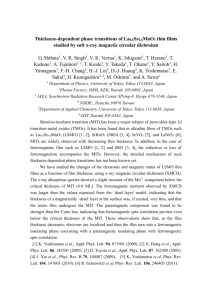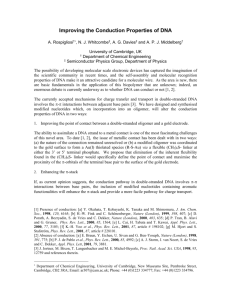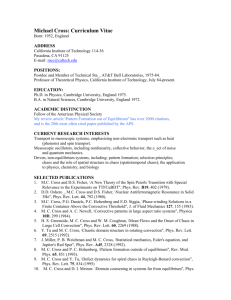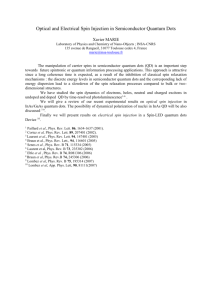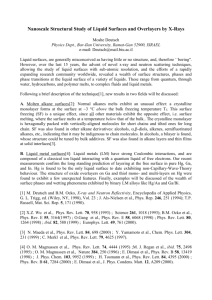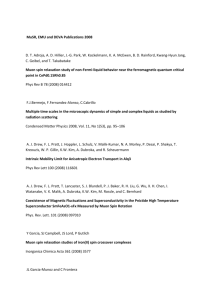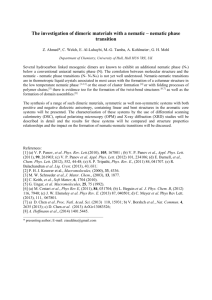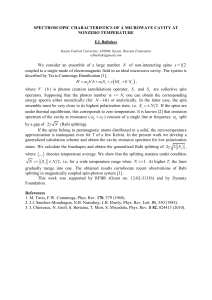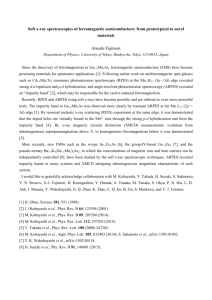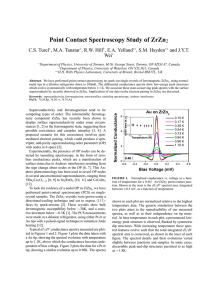アブストラクト及び各先生のご紹介:
advertisement
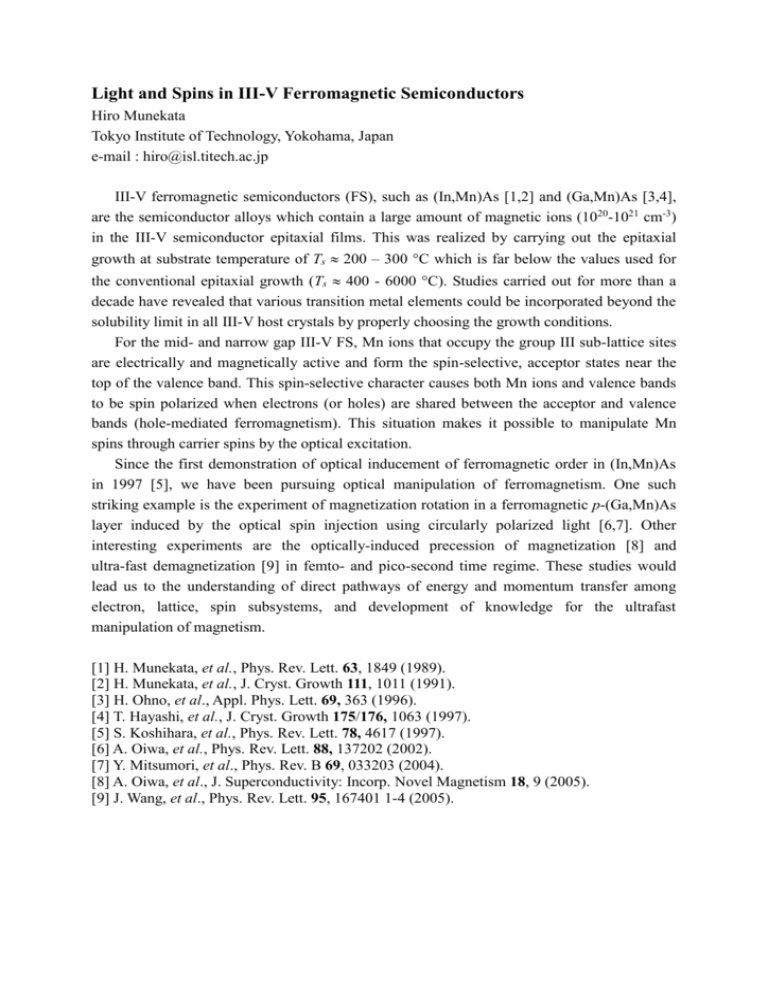
Light and Spins in III-V Ferromagnetic Semiconductors Hiro Munekata Tokyo Institute of Technology, Yokohama, Japan e-mail : hiro@isl.titech.ac.jp III-V ferromagnetic semiconductors (FS), such as (In,Mn)As [1,2] and (Ga,Mn)As [3,4], are the semiconductor alloys which contain a large amount of magnetic ions (1020-1021 cm-3) in the III-V semiconductor epitaxial films. This was realized by carrying out the epitaxial growth at substrate temperature of Ts 200 – 300 C which is far below the values used for the conventional epitaxial growth (Ts 400 - 6000 C). Studies carried out for more than a decade have revealed that various transition metal elements could be incorporated beyond the solubility limit in all III-V host crystals by properly choosing the growth conditions. For the mid- and narrow gap III-V FS, Mn ions that occupy the group III sub-lattice sites are electrically and magnetically active and form the spin-selective, acceptor states near the top of the valence band. This spin-selective character causes both Mn ions and valence bands to be spin polarized when electrons (or holes) are shared between the acceptor and valence bands (hole-mediated ferromagnetism). This situation makes it possible to manipulate Mn spins through carrier spins by the optical excitation. Since the first demonstration of optical inducement of ferromagnetic order in (In,Mn)As in 1997 [5], we have been pursuing optical manipulation of ferromagnetism. One such striking example is the experiment of magnetization rotation in a ferromagnetic p-(Ga,Mn)As layer induced by the optical spin injection using circularly polarized light [6,7]. Other interesting experiments are the optically-induced precession of magnetization [8] and ultra-fast demagnetization [9] in femto- and pico-second time regime. These studies would lead us to the understanding of direct pathways of energy and momentum transfer among electron, lattice, spin subsystems, and development of knowledge for the ultrafast manipulation of magnetism. [1] H. Munekata, et al., Phys. Rev. Lett. 63, 1849 (1989). [2] H. Munekata, et al., J. Cryst. Growth 111, 1011 (1991). [3] H. Ohno, et al., Appl. Phys. Lett. 69, 363 (1996). [4] T. Hayashi, et al., J. Cryst. Growth 175/176, 1063 (1997). [5] S. Koshihara, et al., Phys. Rev. Lett. 78, 4617 (1997). [6] A. Oiwa, et al., Phys. Rev. Lett. 88, 137202 (2002). [7] Y. Mitsumori, et al., Phys. Rev. B 69, 033203 (2004). [8] A. Oiwa, et al., J. Superconductivity: Incorp. Novel Magnetism 18, 9 (2005). [9] J. Wang, et al., Phys. Rev. Lett. 95, 167401 1-4 (2005). Affiliation and Mail address: Imaging Science and Engineering Laboratory, 4259-G2-13 Nagatsuta, Midori-ku, Yokohama 226-8502, JAPAN E-mail: hiro@isl.titech.ac.jp Phone: +81-45-924-5185 Fax: +81-45-924-5178 Photograph

